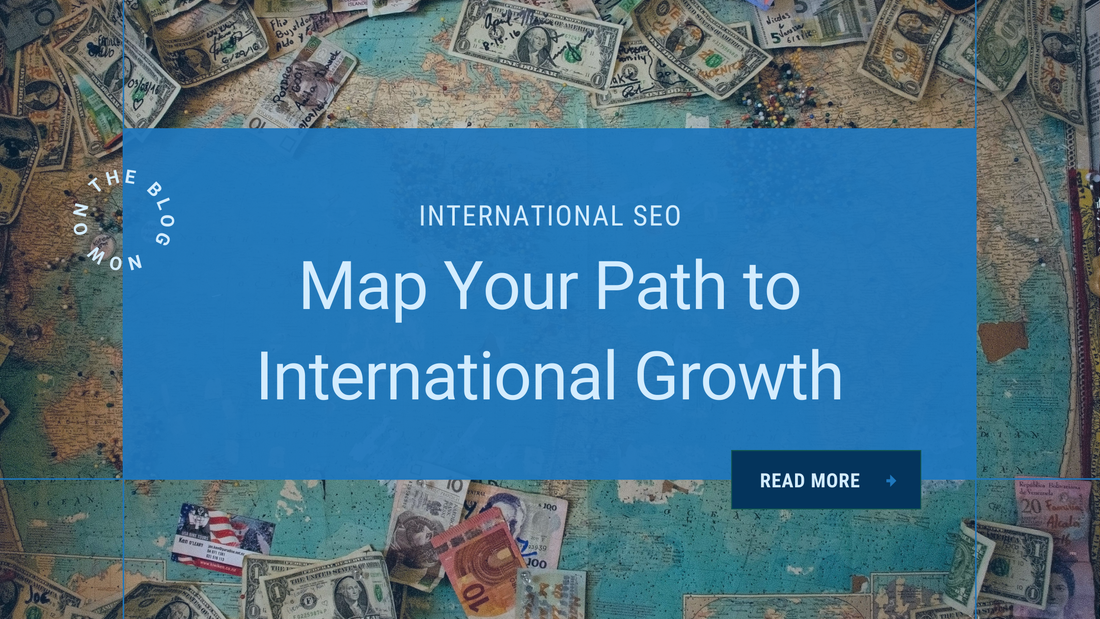
Laying the Foundations of International SEO
Estimated reading time: 9 minutes.
Expanding beyond your local market is both exciting and challenging for any SaaS company. Each new region brings its own nuances—cultural, technical, and competitive—that can’t be addressed with a simple “one-size-fits-all” approach. Yet with the right strategy, these complexities can become real opportunities for global growth.
In this two-article series, I’ll introduce the crucial elements that anyone venturing into international SEO should keep in mind. While not exhaustive, these insights should help you steer clear of common pitfalls and build a strong foundation for reaching audiences worldwide.
Key Takeaways:
- Begin your international SEO journey sooner rather than later– Smaller home markets often cannot sustain ambitious growth goals, so expanding globally early on can be vital.
- Prioritise the most promising countries first – Rather than jumping into multiple territories at once, pinpoint where resources, demand, and cultural alignment are strongest.
- Local competitor insights are essential – Every region has unique market leaders, and understanding how they operate will help you tailor your own strategy for better results.
Table of Contents
- 1. Define and Prioritise Your Target Markets
- 2. Create or Adapt Content for Each Market
- 3. Keep an Eye on Local Competition
- Setting a Solid Foundation for Global Growth
- 4. Choose the Right Site Structure
- 5. Implement Hreflang Tags
- 6. Mind Your Hosting and Page Speed
- Bringing It All Together
A Short Introduction...
I recently connected with an SEO content specialist from the Middle East who’s working in a rapidly growing SaaS scene. Despite their local industry’s enormous potential, the combination of geo-political hurdles and sheer distance from major markets makes achieving global organic reach an uphill struggle. Interestingly, their research revealed parallels with many New Zealand SaaS companies—particularly here in Christchurch—so they reached out for a fresh perspective.
Indeed, Christchurch is known for its growing tech scene. According to the Technology Investment Network (TIN) Report 2023, New Zealand’s top 200 technology exporters collectively generated over $15 billion (NZD) in revenue, illustrating just how rapidly our local tech sector is expanding. Even so, we remain relatively small by international standards, and our proximity to major markets like the United States and Australia can be both an advantage and a challenge. The common refrain is to begin an international SEO strategy early on, since the home audience in New Zealand is tiny compared to the wider global market.
I’ve worked with numerous SaaS companies in New Zealand, and nearly all have placed international SEO high on their to-do list. It can, however, be quite overwhelming once you see the full scope of what’s involved. It’s time-consuming, requires a carefully planned structure, technical fine-tuning, and—crucially—content that speaks directly to the needs of each target market. Plus, you have to factor in competitors on the ground in each territory, which means local competitor analysis and local keyword research become especially important.
1. Define and Prioritise Your Target Markets
I like to emphasise that you shouldn’t leap into “global” SEO without a careful plan. It’s often better to focus on a few strategic markets upfront rather than spreading yourself thin across multiple countries all at once. While it might be tempting to say, “Let’s just go everywhere!”, the reality is that every new region comes with its own cultural nuances, legal requirements, and competitive dynamics—diving into all of them simultaneously can quickly become overwhelming.
Business Considerations
It’s often the case that practical business objectives drive international expansion. For instance, your leadership team might decide that Australia and the UK are their next logical steps, and your SEO strategy tends to follow suit. However, it’s still vital to validate that choice by looking at:
- Available Resources – Can you realistically support customers in those regions (e.g., different time zones, language capabilities)? Do you have the budget to support 24/7 or build brand awareness on the ground?
- Cultural Fit – Even seemingly small language shifts—like British English vs. American English—can matter. Does your target market share the same problems or challenges internationally, as they do domestically? On a larger scale, all markets have their own industry regulations, how will this affect how you present your products or services?
- Potential Partners – Sometimes entry into a market happens because you’ve secured a local partner or distributor. In that scenario, how can you coordinate strategies with them so your online presence feels authentic?
Using Search Metrics for Direction
A key practice is to use keyword and competitor research to back up your instincts about new territories. If you suspect a product will resonate in, say, Malaysia—test it. Check local keyword demand, investigate competitors’ authority, and see which topics draw significant search interest. If the data confirms strong potential, that’s a good sign to prioritise that market.
Cultural Differences & Customer Personas
A customer persona that works well in your home market might not translate seamlessly abroad. In some regions, the decision-maker could be a different role or part of a larger procurement process. Local norms around communication, software adoption, or even technical infrastructure can also shape how your audience evaluates and interacts with your product. Not to mention, regional political and cultural norms will impact your customer persona and how they may engage with your brand.
Competitor & Traffic Clues
It’s also helpful to check your analytics for any existing international visitors. If you see a surprising amount of traffic from Canada, for instance, that may suggest an untapped opportunity. The next logical step is to run competitor analysis in that region—find out what keywords they target, what sort of authority they have, and whether there’s enough search volume to justify deeper investment.
Start Small, Then Expand
Rather than trying everything at once, begin with one or two markets where you have solid commercial reasoning and encouraging SEO data. Work through localising content, setting up technical structures, and establishing local credibility. Once you find that rhythm, scaling to additional territories is far more manageable.
In short, defining and prioritising isn’t just about picking countries at random; it’s about combining data-driven insights with a realistic assessment of what your business can handle. By doing so, you’ll be more likely to see a rewarding return on your international SEO efforts—before pouring resources into regions that might be less profitable or require far more groundwork.

2. Create or Adapt Content for Each Market
When it comes to localising your content, it’s important to recognise that it’s not simply a case of translating text. Small details—imagery, currency formats, spelling—can shape how customers connect with your brand. If a visitor lands on your site and finds references that don’t suit their region, their trust in you can disappear almost instantly.
Moving Beyond Simple Translation
Even for English-speaking regions, directly duplicating pages can trigger unintended consequences. For starters, using the exact same copy across the UK, Australia, New Zealand, and beyond can cause duplicate content issues in search engines. Plus, each country may have unique slang, cultural references, or spelling conventions. If you fail to adapt, your audience may swiftly sense that your messaging isn’t genuinely aimed at them.
Show Proof That You “Get” the Local Audience
One of the best ways to build credibility is by featuring customer wins or partnerships specific to each region. For instance, if you’re entering the UK market and already have a British client who benefitted from your platform, showcase that success story. These local case studies reinforce your relevance and trustworthiness in each new market.
Legal and Cultural Nuances
Different regions have varying requirements for data privacy and software deployment—GDPR in Europe is a prime example. If your SaaS product operates in a specialised niche (e.g., healthcare, finance), you may need to comply with additional regulations in each territory. Furthermore, local norms might influence acceptable communication styles or user interface choices—such as whether your software should integrate with region-specific platforms.
Localising User Experience
When people see details they immediately recognise—local currency, relevant support hours, or tech partners that operate in their region—they gain confidence. Tailoring these details to each audience strengthens customer relationships and shows search engines that you’re genuinely committed to that market.
At a minimum, localised page titles, meta descriptions, and on-page copy form the backbone of your international content strategy. You can also integrate region-specific testimonials, adapt your contact details, and craft locally relevant blog topics to solidify your credibility.
Ultimately, creating or adapting content for each market is about respecting local expectations. By researching each locale’s technical and cultural nuances, and by focusing on genuine value rather than a one-size-fits-all pitch, you’ll foster stronger connections with international audiences—and see corresponding gains in search visibility.
3. Keep an Eye on Local Competition
A frequent oversight when expanding abroad is assuming your domestic competitors are the same ones you’ll face overseas. In reality, each market has its own set of local heavyweights. That means competitor research isn’t a one-off step; it must be repeated for every territory you enter.
Research & Tools
Use geo-specific SERP checkers or SEO tools to see who ranks well for your focus keywords in each new region. A brand you’ve never encountered might dominate local searches. By studying their site authority, content approach, and backlink profile, you’ll uncover valuable insights to shape your own local strategy.
Identifying Content Gaps
Competitor analysis can highlight content opportunities you might have missed. For instance, you might find they host a robust FAQ tailored to local concerns, or they include region-specific imagery and testimonials that resonate with locals. Identifying what works well can guide you to refine or expand your own offerings.
Staying Adaptable
What works for you at home might not translate smoothly abroad. Local competitors may stress different product features, marketing channels, or ways of communicating. Being open to adjusting your approach—both technically and in terms of content—will serve you well.
Ongoing Monitoring
Markets evolve, and so do competitors. Continue revisiting your competitor landscape to watch for new players or strategy shifts. This ensures you can refine and reposition as needed, staying aligned with the local market’s realities rather than relying on outdated assumptions.
Ultimately, never underestimate how local competitors influence user expectations. By researching them thoroughly and keeping close tabs on their strategies, you’ll better understand how to meet regional needs—and stand out in a crowded global marketplace.
Setting a Solid Foundation for Global Growth
Expanding your SaaS or tech business internationally requires more than good intentions. It involves careful market selection, locally tailored content, and continual competitor analysis to stay relevant in ever-shifting landscapes. Once you begin prioritising markets wisely and customising your messaging for local audiences, you’ll lay a strong foundation for future growth.
In the next article, I’ll explore the more technical side of international SEO, including site architecture choices, hreflang tags, and hosting considerations. These practical steps will help you refine your global presence even further, ensuring faster load times and better accessibility to all your regional audiences.

